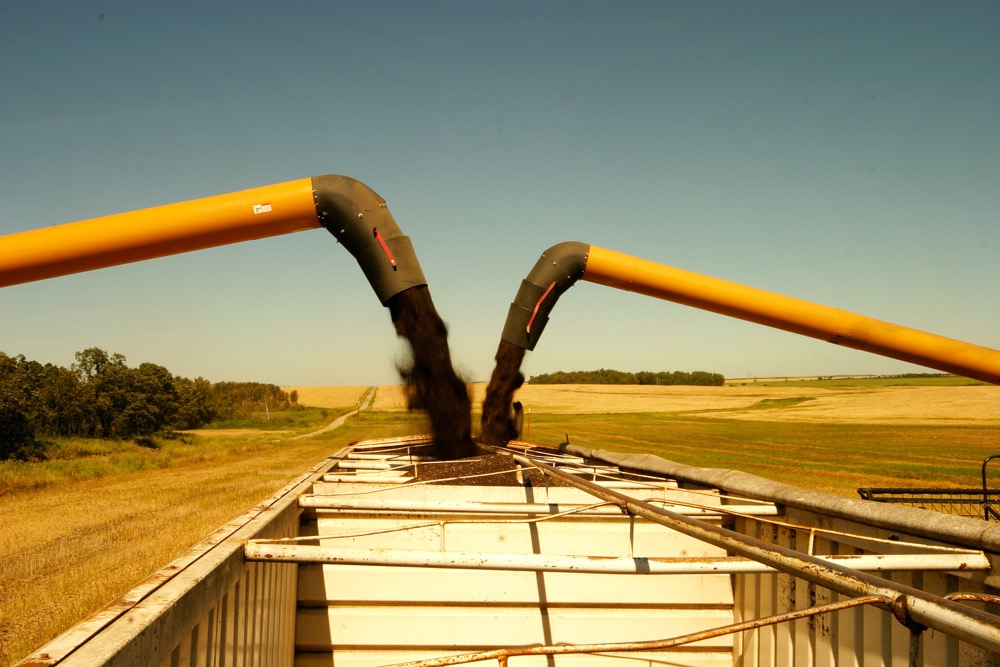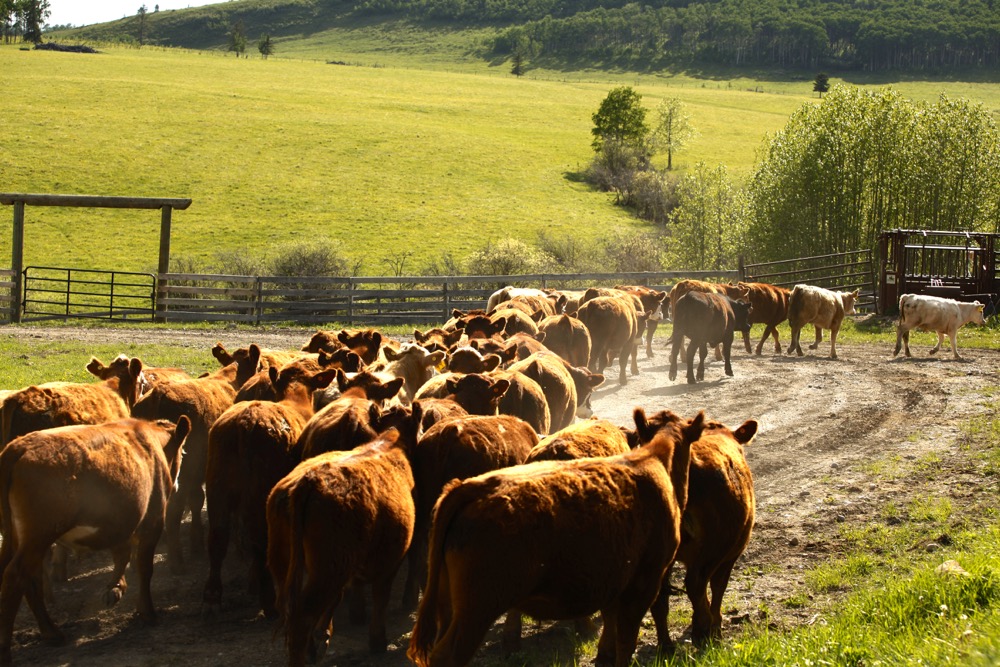Grain and oilseed prices are reeling from massive global crops, and the growing consensus is that we may not see a bull run in the market at any time in the new crop year. In fact, the USDA’s latest long-range forecasts have got some analysts predicting we may not see another bull for 10 years.
Country Guide associate editor Gord Gilmour sat down with market analyst and columnist Errol Anderson in Calgary to talk about the market, what it’s been doing and what you should be looking for in the future.
Read Also

A new spin on farm legacy
What does farm legacy look like for the next generation.
Anderson sees tough markets ahead. But as you’ll read, he sees opportunities too… if you know where to find them.
Country Guide: The market has changed. What can you tell us about what’s been going on and where we might be heading?
Errol Anderson: In 2012, markets responded to the U.S. drought situation by moving up, causing many to talk about a new paradigm. But in reality that new paradigm only lasted about eight months.
The following season bumper crops, especially in Western Canada, brought prices back down to earth as supply met demand. This shouldn’t have been surprising to most people — we’ve seen this pattern again and again in the agriculture industry. This latest expression of the pattern was a particularly strong one, but it was still the same pattern, so we have a fairly good idea where we are in it.
Typically markets have four distinct phases. In the first phase the market begins to heat up and climbs. In the second stage the market peaks, often in a frenzy of activity. After the market peaks, there’s a period of hope, where people are waiting for it to come back. We’re just exiting that period now and entering the period of fear and panic, where people rush to liquidate and cover long positions.
Only after this has happened will the market stabilize, lick its wounds and recover from any overshoot. And only then will prices stabilize and begin to recover. In my view, much of that process is still ahead of us.
Overlaying these cyclical concerns are unique macroeconomic issues that I think really should be watched closely. I am not a fan of quantitive easing by central bankers. It’s money printing, pure and simple, and it was designed to stoke inflation and prevent something central bankers fear — deflation. But there’s a lot of debate over whether that’s actually worked, or has simply kicked the can down the road.
You can see that debate in the Fed (U.S. Federal Reserve) Minutes and even in what’s been happening in the stock market the last while as it has been dropping. It may still go higher, but the fact that it’s moving up and down demonstrates there’s a debate ongoing about the true value of this market. I think there’s a very good chance that the U.S. is headed down the same road Japan has been on since the 1980s — slow or no growth and in some cases even outright deflation.
The other big issue I’m watching is the European banking situation. Again, this is a hangover from the 2008 financial crisis, and again nothing has truly been resolved. It’s been on the back burner, but it looks like it’s beginning to heat up again. If these factors deliver a macroeconomic shock, it’s difficult to see how agriculture doesn’t get swept along.
Guide: So you’re not forecasting a quick return to higher prices?
EA: No, I’m afraid not. I realize some farmers won’t welcome that news, but I also don’t think keeping it from ourselves is doing anyone any favours in the long run. The truth is, grain markets always spend more time in bear territory than bull territory.
On average, grain markets are in bear territory about two-thirds of the time. I don’t think anything has changed this time. Economics will always assert themselves over time, which is exactly what we’ve seen happen.
I think more than a few people in the market got carried away during the 2012 U.S. drought and really did come to believe it was different this time, that we were into a new paradigm and that soybeans really should be $17 a bushel. That led to a lot of investments and a lot of non-traditional money flowing into agriculture, which increased productivity. Again, it’s a pattern we’ve seen again and again. This was just the latest expression of it.
Now it’s not all doom and gloom. If you’re a good marketer, there will still be opportunities to lock in profitability. I think that’s a very important point. But it’s not going to be like it was in a rising market where finding those opportunities was easy — you’re really going to have to look for them, to shop your buyers, and to be ready to execute when they arise, because they won’t last long.
- More Country Guide: Looking for a safe bet in a era of crop price predictions
For example, this week, there was a 50-cent- a-bushel premium for No. 1 CWRS 13.5 protein, even in a falling market, because there was a buyer who needed that product and that need caused them to cry uncle and capitulate. But once that’s gone, it’s gone.
Guide: Can you tell us a bit more about that concept of shopping your buyers? Why is that important?
EA: Think about it from a grain buyer’s perspective who has two potential suppliers. One farm doesn’t want to tell anyone what they’ve got in their bins, because they want to keep that information to themselves, probably out of fear or of not wanting to reveal too much. Now contrast that with the operation that brings samples of everything that’s on the farm. It’s not even close. When those short-term opportunities arise, that’s the farmer who’s going to get the call first and have them offered. If they build a relationship with buyers, farmers will find that they’re better served and that opportunities appear. It sounds simple but it’s a very powerful tool.
Guide: What else can you tell us about what may happen as this plays out? It sounds like you’re expecting some pain to be felt down on the farm?
EA: Yes, unfortunately, I do expect that. What I don’t really know — and nobody knows — is how much pain there will be. Some farms will be hurt badly. Some farms will go out of business. Some will survive and in the end do quite nicely. It’s all going to come down to management, and there are some really well-run farms out there.
In the end, I think the farmer who doesn’t understand markets — they don’t get that markets don’t care about cost of production, that markets are emotional, and that emotions are deadly in business — they’re the ones who are likely to be hurt the worst. We’re back in a time where it’s going to be very important to treat your bottom line with respect, sharpen your pencils, cut your costs — where you can — be very strategic about marketing.
We also could see some deflation in the sector. We certainly saw inflation on the way up. Land prices could fall. I certainly expect to see cash rents come down as the new reality sets in. Equipment prices, especially for used equipment, could also fall. It could even affect the price of inputs such as fertilizer.
Then there’s also the question of some of the money that’s found its way into the sector in recent years: corporate money, investor money, offshore money — call it non-traditional sources.
I’m not sure how patient that money is, or how willing these investors are going to be to ride out a period of lower returns before they want to liquidate and find something with higher returns. Or it’s possible that some of those macroeconomic shocks could force them to liquidate. That’s an unknown.
Guide: Tell us a bit about how to get emotions out of marketing. What would a well-managed marketing plan in a bear market look like?
EA: This strategy is a mix between utilizing cash contracts and a commodity trading account. It starts with pricing a portion of your crop using a production contract — say 10 or 15 bushels an acre of canola. Going beyond that, of course, you risk incurring production penalties if there’s a shortfall.
Basis levels also need to be monitored by the grower. But should futures and local cash bids continue to rise on weather issues, it’s time to scale in put options to take advantage of these higher prices. Often basis levels weaken during a futures market rally. In other words, the cash market doesn’t keep up to the futures. The advantage of puts in this scenario is that it doesn’t commit the grower to produce and deliver the grain to a buyer and there is no margin call risk. This helps keeps grower emotions in check.
It’s important for the grower to realize that the best-case scenario is when these put options expire worthless. This means the local cash price held up. But markets seldom work that way. Rallies are often short lived, but offer excellent pricing opportunities. Bear markets characteristically don’t allow the bull to run very long before selling pressure reappears. I believe we are in that type of market right now.
Guide: In your opinion, what’s the best general tool for hedging at the farm level?
EA: I’m not a huge fan of using futures outright, because it takes a strong person to take a margin call. I am a big fan of using options — calls and puts. It’s not as strong a tool as, say, straight shorting the futures market, but it keeps you disciplined and keeps your emotion in check. The people who did well using futures recently — and I had several clients who did — were extremely disciplined and they had the guts to take margin calls, stick by their position, and even add some more positions while they were at it.
It got kind of ugly, but in the end, now that it’s turned, we’re sending cheques home, and I love it. But that’s not for everyone. Everyone’s appetite for risk and their ability to weather those sorts of things is different, and we as market advisers need to respect that.
When we start working with a new client, we’re constantly trying to gauge their ability to weather risk and we make recommendations accordingly. For a lot of people, a put in a rising market, which gives you the option to sell at a price but doesn’t have a delivery attached to it, is a good tool. It’s more like an insurance premium, and it helps you remove a lot of the emotion from the decision and gives you the chance to lock in profitability now, but still gives you the opportunity to participate in the upside of the market.
Guide: Do farmers use these sorts of tools enough? Or are they still too hung up on holding the actual grain, rather than moving the grain and buying the paper?
EA: I think they have been, but that might be changing. I’ve been in this business a long time, many years now, and last fall, for the first time, I had a number of clients say to me “Why don’t we sell the grain, instead of storing it, and just buy the paper instead?” That was revolutionary.
Unlike other market advisers, I don’t favour storing grain, which I know is not a particularly popular opinion. But to me, stored grain is nothing but a liability. There’s just so much that can go wrong. If you move that grain and buy the paper, you’re protected. You’ve got the money in your hand, but you’ve still got the chance to participate in any increase in markets.
Now, it’s still important to be patient when you do this, even with options. It can feel like you’re throwing good money after bad sometimes. But if you’re disciplined and keep your emotions in check, over time you will come out ahead.
Guide: At the risk of floating you a softball question and letting you talk yourself up, why should farmers use the services of someone like yourself, and especially during a time like this in markets?
EA: (chuckles) Well, it doesn’t actually have to be us, there are a number of really good market advisers and commodity brokers out there. But I do think it’s important to have someone like us in your corner, especially during these most challenging times. There are a lot of younger farmers out there now who probably haven’t seen this kind of market. I think they’d benefit from having someone with a bit more experience who’s seen a bit more of what can happen in markets. For example, I remember on 9/11, when the second tower went down and all our screens went blank. That’s an extremely dramatic example, but you get the idea.
And for everyone, regardless of their personal experience level, I think there’s a lot of value to be found in having someone working on marketing that’s like us — less emotionally involved, a paper pusher, almost. I’ll say it outright just to emphasize it: emotions are deadly in business.
















